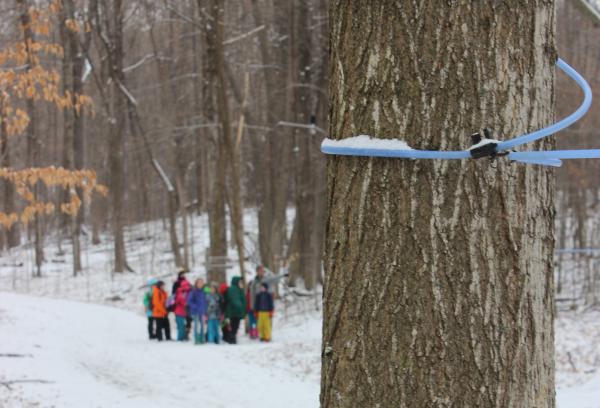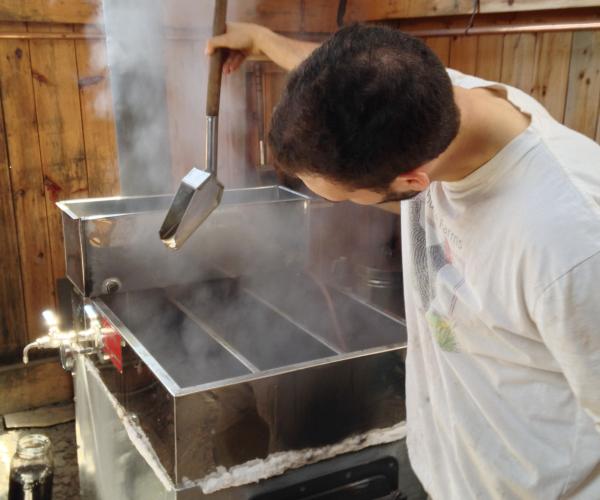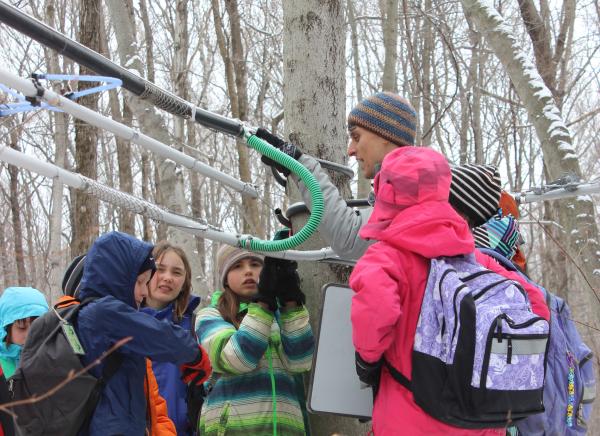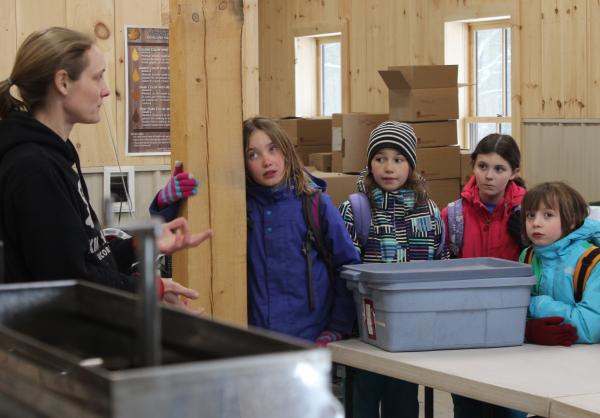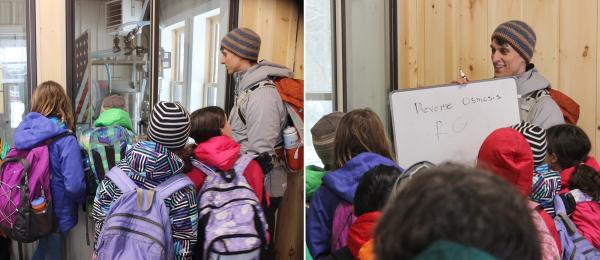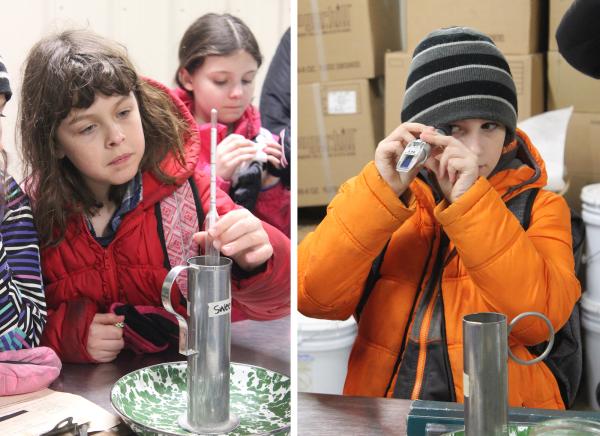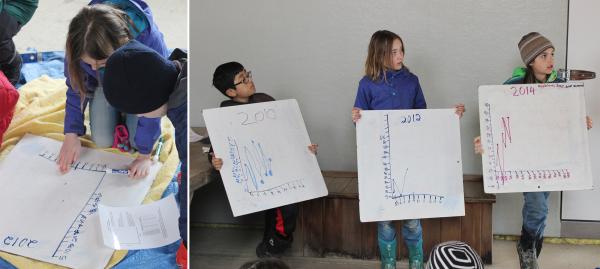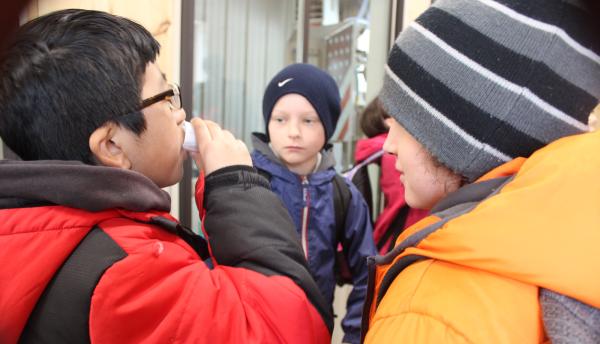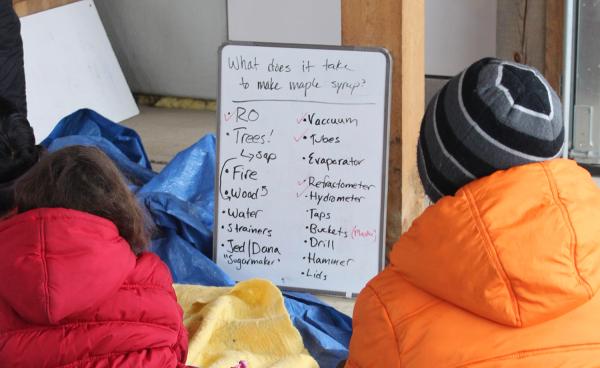Sugaring in a Changing Climate
Every school field trip to the Farm is a special experience, but for the fourth graders from Union Elementary School in Montpelier, last week's “Sugaring by the Numbers” program was extra special. Why?
First, they were the first students to explore our new sugarhouse -- a production facility built with education in mind.
Second, this field trip had a new component: a link to climate change.
The tree-to-syrup experience began in the Farm Barn sugarbush, where students explored the life cycle of the maple tree, and how the combo of cold nights and warm days in spring triggers the rising of the sap. They tapped trees, collected sap from traditional galvanized metal buckets, and investigated the mechanics of boiling sap.
That’s what the smaller operation behind the Farm Barn is all about: introducing students to the basics and traditions of sugaring, and letting them get up close to the natural systems that support this long-time Vermont industry.
Then students headed over the hill to the new sugarhouse at our Market Garden. Along the way, our new, extensive network of tap lines was on full display, prompting questions and helping us introduce how sugaring has changed over time.
Students traced the taplines to the new sugarhouse, where sugarmaker Dana Bishop greeted them. She explained how she uses math, biology, and chemistry in sugaring to carefully control temperature, measure sugar content and specific gravity, and grade the syrup. She relies on some sophisticated equipment, too. One of these tools is the reverse osmosis (RO) machine. Students oooh’ed and ahhh’ed over it as educator Ryan explained how it works. The RO extracts water from the sap, boosting the sugar content of remaining sap from 2% to 8%. Why is that significant?Students answered the question by doing some math, but here’s the shortcut: 8% is FOUR times 2%, so with our RO machine, boiling is FOUR times faster. That saves a lot of time, effort, and fuel!
The discussion of saving fuel helped turned the discussion to climate change. The Farm has detailed records of sap yields and daily high and low temperatures over the past several years. Student groups were each given one year of data to chart on a graph. Then they compared and interpreted.
In 2010, how many days could boast the cold night/warm afternoon combo needed to make sap run? What about 2016? Were there patterns? With a little prompting, students were able to recognize that maybe, just maybe, temperature fluctuations over the past several years appeared a bit more erratic, a bit less predictable.They saw that we sugared early in February in 2010 but as late as April in 2014.
And therein lies the crux of climate change when it comes to sugaring. It’s not that Vermont will start growing pineapples instead of maple trees. In fact, this year, the Farm made over half a gallon of syrup per tap, far above what's typical for Vermont: 1/3 gallon per tap. But with less predictability in the “when” of sap runs, resilient and flexible sugaring systems have become more critical.
Our new technologies give us that flexibility. Our vacuum pump can slowly draw sap from the trees even when the weather conditions aren't 100% ideal (like when temperatures hover around freezing all day). Also, by shrinking the time it takes to boil, our RO machine saves energy -- both generated and human. (Boiling deep into the night is an iconic image of Vermont sugaring, but our sugarmakers appreciate a bit more sleep!)
By linking climate change to this very Vermont tradition for students, we’re reinforcing a universal field trip goal: to build bonds between kids and place. We’re also helping to open up a conversation, a line of inquiry. Whatever the natural system or industry, students can start to ask, “How might climate change impact this?”
It’s only a beginning. But by partnering initially with teachers who are part of our Climate Change Education Leadership Committee, (like Melissa Pierce of the Union School), we can help ensure that the conversation we start continues back in the classroom.
We think it will. As Melissa hopped on the bus back to Montpelier, she turned to Educator Ryan Morra and said, "That was beyond what I was hoping for."
Want to learn more about sugaring? Check out "Dispatch from the Sugarwoods," in the blog of Northern Woodlands Magazine.

